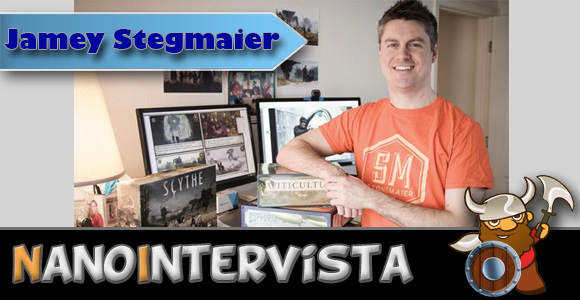
After playing Scythe and writing the review, we were curious to ask some questions to his creator. We managed to get in touch with Jamey Stegmaier, who kindly agreed to answer our questions about the game and about the future developments of Stonemaier Games. We leave you, then, to the interview.
first af all we want to congratulate with you for Scythe. You were able to design a game with a lot of mechanics, which at first glance seems very complex, but in reality you can master easily after few rounds of play. If we add components treated in detail (you can see, for example, from the image that you put at the bottom of the box to help players to put all the components settled) and a very themed graphics, the result is an excellent game that goes right to the wishlist of a large number of gamers!
Where does the idea behind Scythe?
Jamey Stegmaier: The idea for Scythe stemmed from Jakub Rozalski’s art. I discovered his 1920+ series on Kotaku a few years ago, and I was so drawn into it that I asked him if I could develop a board game in that world.
What inspired you during the design fase of the game?
JS: Really, everything stemmed from the art. I wanted to capture the feel of the alternate-history Eastern European world in the mechanisms. Some games that impacted the design were Terra Mystica (engine building, focus on rewards instead of punishment) and Kemet (the tunnels, having units retreat instead of die).
What was the objective when you started developing the project?
JS: I wish I had a fancy answer, but really it’s pretty simple: My objective was, is always, to design a fun, unique game.
Did you expect such a success of the game, which arrived, I think, to its fourth reprint?
JS: That’s been one of the biggest surprises to me. I had no idea the game would sell so well and be so highly ranked. The fourth printing is arriving in stores now, the fifth printing is on the boat, and the sixth printing is wrapping up production.
There will be future development of the game? New expansions or improvements?
JS: We have one expansion in the works and several promos. I’m open to adding more expansions if they contribute to the story and the experience.
From what we read in an article of your BLOG, you have encountered several problems related to the Kickstarter campaign, that led you to the decision to stop using this type of platforms. What have you “learned” from this experience?
JS: Well, to be clear, I’m still enamored by crowdfunding and Kickstarter. There isn’t a problem with the platform itself. The problems arose from a few fulfillment centers who didn’t do what they said they’d do (despite positive past performance) and a few hundred backers who—despite the project being ahead of schedule—became a huge psycholocial burden. I learned a lot about human nature and how past performance isn’t necessarily indicative of future performance. I also learned that if some aspect of my business is weighing me down psychologically, it’s worth cutting that aspect (for myself and our fans).
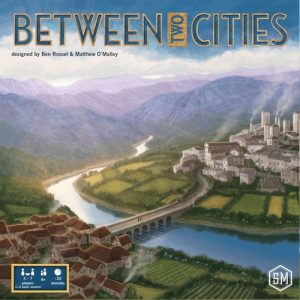 In Italy you have chosen to rely on the Ghenos Games for the distribution of Scythe. It ‘a single agreement or was the beginning of a collaboration that will see your next projects published by GG in Italy?
In Italy you have chosen to rely on the Ghenos Games for the distribution of Scythe. It ‘a single agreement or was the beginning of a collaboration that will see your next projects published by GG in Italy?
JS: Yes, it’s been a pleasure to work with Alfredo and Anna. Our next project with them is Between Two Cities, and I would absolutely love to publish Viticulture in Italian.
“Charterstone” is your next project, a worker placement game. Can you give us some more details about it and when it will be published?
JS: Charterstone is a legacy village-building game with a worker-placement element. Players construct permanent buildings in a shared village, and those buildings are action spaces for any player to use. The game features a 12-game campaign followed by infinite replayability. We’re looking at a 2017 release, probably in the second half of the year.
What other projects are in the pipeline for 2017?
JS: Expansions! 🙂 The Between Two Cities expansion will come first, followed by the Euphoria expansion and the newest Scythe expansion.
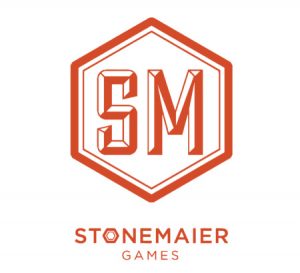 What do you see in the future of Stonemaier Games, what goals did you set?
What do you see in the future of Stonemaier Games, what goals did you set?
JS: My primary goal is to bring joy to tabletops worldwide. I’d like to continue to try to do that using our current method of releasing 1-2 games a year, while still supporting older games through reprints and expansions. It’s essentially the Days of Wonder model.
Thank you for the time you have dedicated us and once again we renew our congratulations.
Good luck for your next projects.
JS: Thanks so much for this! I had fun answering these questions.
Svik
If you want to be updated about our articles and reviews, click “Like” on our Facebook page, add our Google+ contact, our Twitter account or our Instagram account.

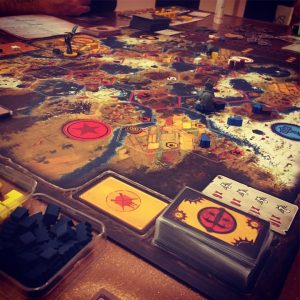
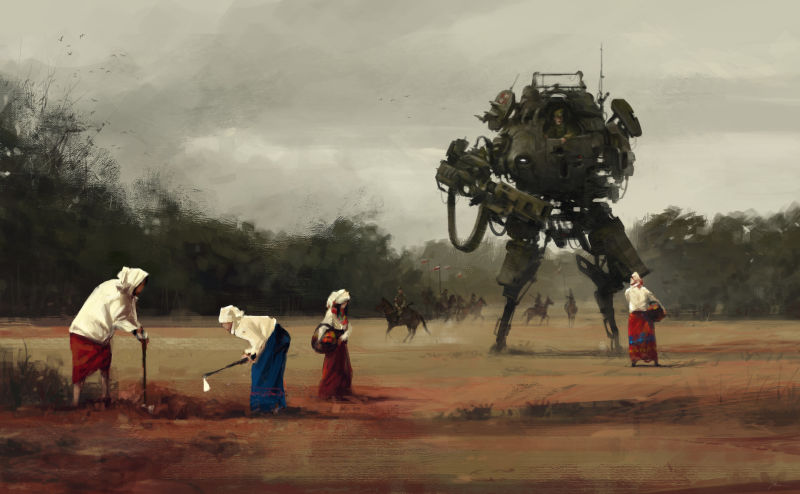


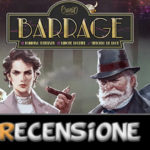
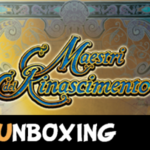
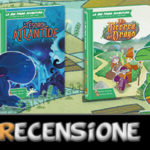
Lascia un commento